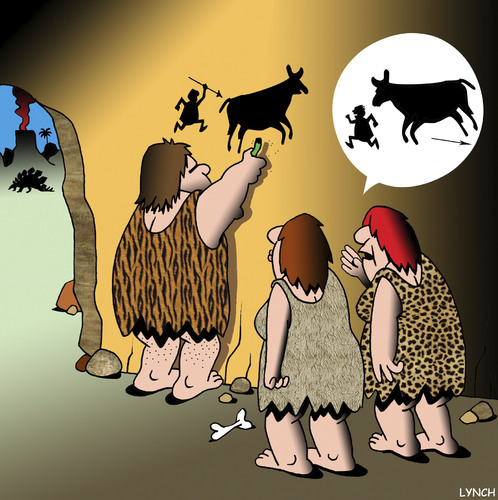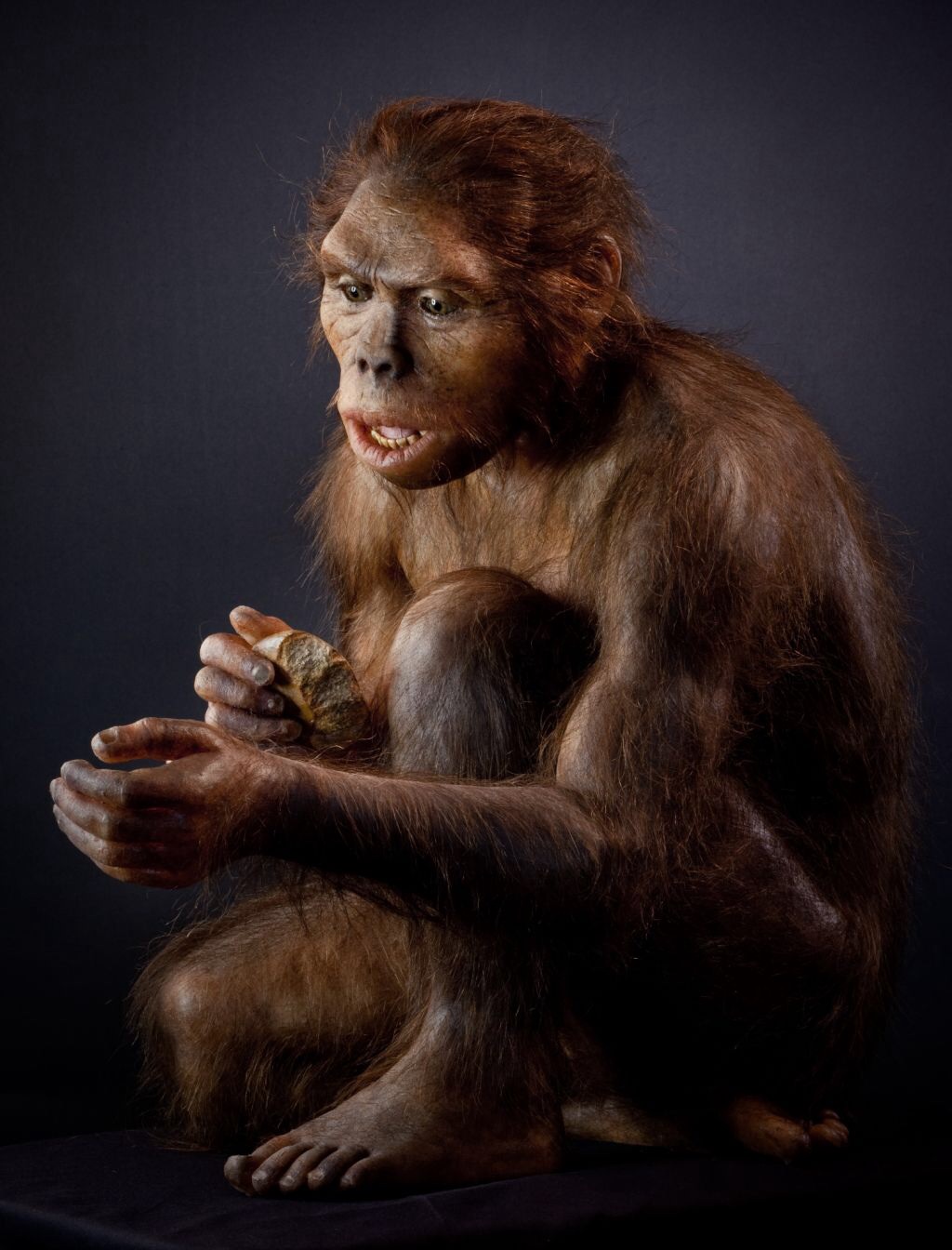
ÍNDICE T.6.
A. LOS PRIMEROS SERES HUMANOS
A.1. LOS PRIMATES A.2. LA HOMINIZACIÓN
B. LA EDAD DE PIEDRA
B.1. EL PALEOLÍTICO: modo de vida, el fuego, herramientas, religión y arte.
B.2. EL NEOLÍTICO: Origen, modo de vida, revolución, herramientas y difusión.
C. LA EDAD DE LOS METALES
A.1. LOS PRIMATES
- Vivieron en África, hace unos ___ millones de años.
- Fueron los primeros homínidos que dieron paso a la ______________.
A.2. EL PROCESO DE HOMINIZACIÓN
1. Cambios del primate al ser humano. Fue un proceso lento y complejo. Principales cambios:
- Adquieren una posición__________ (de pie) y la marcha bípeda (manos ______
para manipular y fabricar útiles)
para manipular y fabricar útiles)
- Desarrollo del cerebro, gracias al aumento de la capacidad ________.
- Una frente plana y mandíbulas y dientes más pequeños gracias al uso del ______
y de útiles para cortar alimentos.
y de útiles para cortar alimentos.
2. Logros.
- Todos estos cambios favorecen una mayor inteligencia y comunicación, apareciendo el ______.
- Gracias a su nueva inteligencia y comunicación fueron capaces de conocer el
medio natural (plantas comestibles, animales peligrosos…), de crear __________
para dominar ese medio y de transmitir estos nuevos conocimientos a las siguientes
generaciones.
medio natural (plantas comestibles, animales peligrosos…), de crear __________
para dominar ese medio y de transmitir estos nuevos conocimientos a las siguientes
generaciones.
3. La evolución humana. (al final de la entrada hay imágenes de cada homo)
- Los primeros homínidos fueron los primates (Australopithecus, ya era bípedo), que evolucionaron al...
1. Homo Habilis (que vivió en África y fue capaz de elaborar sus propias herramientas)
2. Homo Erectus (que se expandió por _______ y Asia, descubrió el fuego)
3. Homo Neanderthal (fuerte y resistente al frío, entierra por primera vez a sus muertos)
4. Homo Sapiens Sapiens (extendido por _______________, inventa el Arte y crea un lenguaje complejo), el hombre actual pertenece a este especie.
1. Homo Habilis (que vivió en África y fue capaz de elaborar sus propias herramientas)
2. Homo Erectus (que se expandió por _______ y Asia, descubrió el fuego)
3. Homo Neanderthal (fuerte y resistente al frío, entierra por primera vez a sus muertos)
4. Homo Sapiens Sapiens (extendido por _______________, inventa el Arte y crea un lenguaje complejo), el hombre actual pertenece a este especie.
Neanderthal - Sapiens
B. LA EDAD DE PIEDRA
B.1. EL PALEOLÍTICO: modo de vida, el fuego, herramientas, religión y arte. P.152-153 / 160 / 162-163
FICHA DE TEORÍA DEL PALEOLÍTICO



B.2. EL NEOLÍTICO: Origen, modo de vida, revolución, herramientas y difusión. P.154-155 / 160

C. LA EDAD DE LOS METALES
C.1. COBRE C.2. BRONCE C.3. HIERRO P.156-157 / 161FICHA DE TEORÍA DE LA EDAD DE LOS METALES

href="http://www.juntadeandalucia.es/averroes/ceiphispanidad/Archivos/actividades_tic/la_prehistoria/menu.htm">Y CON ÉL LLEGÓ LA PREHISTORIA!!
JUEGOS, CURIOSIDADES Y VÍDEOS:
2. Play this game "Walking with Cavemen", the evolution of the human species.
3. Comprueba lo que sabes con estos TESTS: del Neolítico (pincha aquí) y del Paleolítico (pincha aquí). Completa la tabla en la que ordenarás los conceptos que le corresponden a cada período de tiempo Pincha aquí!!
5. Check what you know!! ¿Paleolítico o Neolítico?
6. LÍNEA DEL TIEMPO DE LA PREHISTORIA
Para exponerla en la Semana Cultural (Edades de la Historia)
- Título y línea del tiempo (2)
- Pinturas rupestres (2 policromas y 2 monocromas)
- Fuego y usos (1)
- Utensilios (2 Paleolítico: Bifaz, arpón) (2 Neolítico: hoz, molino de mano) (1 Edad Metales: puñal)
- Evolución humana (3 todos en Paleolítico)
- Vestimenta (2 Paleolítico: pieles, aguja) (2 Neolítico: tela, hilos)
- Casa (1 Paleolítico: cueva) (1 Neolítico: una aldea con varias cabañas) (1 Edad Metales: ciudad amurallada)
- Caza y recolección (2 Paleolítico): animales, frutos
- Agricultura y Ganadería (2 Neolítico): cereales, lana
- Cerámica (1 Neolítico)
- Monedas (1 Edad Metales)
- Rueda (1 Edad Metales)
- Pinturas rupestres (2 policromas y 2 monocromas)
- Fuego y usos (1)
- Utensilios (2 Paleolítico: Bifaz, arpón) (2 Neolítico: hoz, molino de mano) (1 Edad Metales: puñal)
- Evolución humana (3 todos en Paleolítico)
- Vestimenta (2 Paleolítico: pieles, aguja) (2 Neolítico: tela, hilos)
- Casa (1 Paleolítico: cueva) (1 Neolítico: una aldea con varias cabañas) (1 Edad Metales: ciudad amurallada)
- Caza y recolección (2 Paleolítico): animales, frutos
- Agricultura y Ganadería (2 Neolítico): cereales, lana
- Cerámica (1 Neolítico)
- Monedas (1 Edad Metales)
- Rueda (1 Edad Metales)
WORKBOOK
PREHISTORY
Definition of Prehistory: It refers to the time before written history, from when human beings first appeared until writing began. It is much longer than History.
*HUMAN EVOLUTION
The first human hominids appeared around 3 million years ago. Most scientists divide hominids into different types:
AUSTRALOPITHECUS: They ate leaves, fruits and dead animals. They didn´t make their own tools.


HOMO HABILIS: They were taller than Australopithecus, and their brain was bigger. They were the first to create stone tools.

HOMO ERECTUS: They were the first upright human beings. They used varied tools and knew how to make fire. They migrated from Africa to Europe and Asia.


HOMO SAPIENS=NEANDERTHAL MAN: They had a large brain and they were really strong.

HOMO SAPIENS SAPIENS=CRO-MAGNON MAN: They were humans like us. They were taller than the Neanderthals, but they were not as muscular. They developed art and technology, created cave paintings (Altamira) and made clothing, ornaments and new tools, like the bow and arrow.

The Stone Age
*Prehistory is divided into two ages: 1.The Stone Age 2.The Metal Age
*The Stone Age is subdivided into Paleolithic or Neolithic
Paleolithic 2-3 million years ago
How did the first humans live?
>>They were nomads and lived together in small groups. When it was very cold they lived in caves, but when the weather was good they built shelters=cabins.
>>They fed themselves by hunting, fishing, and gathering.
>>They made tools out of stone, bone, and wood. (Arrows, perforators, harpoons)
Why was fire so important?
>>They realized that it could be made by banging two stones together to make spark.
>>Fire had many uses: for heat, light, cooking, protection, and cleaning forests.
Who created the first cave paintings?
>>Cro-Magnon men created the first paintings on the walls of their caves.
>>These presented the animals: horses, mammoths, and bison and they were realistic
>>The most famous European paintings are in France and Altamira (Spain)
What was the Neolithic Age?
>>Neolithic refers to the polished Stone Age.
>>People used more specialized tools. There were important innovations and new objects were invented: bowls
What sort of revolution occurred in the Neolithic Age?
>>Neolithic Revolution = the change from nomadic to farming life
>>Humans learnt to cultivate plants and domesticate animals; their lives changed totally. The first plants they cultivated were cereals, rice, and corn.
>>The first domesticated animals were dogs, sheep, and goats.
How did it change their lives?
>>They stopped moving from place to place to find food.
>>They started to build villages next to rivers.
The Metal Age
How did metallurgy appear?
>>Around 5000 BC, in the Middle East. First copper was used then bronze and around 1500 BC iron.
>>People made new tools and weapons, ornaments, and jewellery
How did life change?
>>Neolithic villages evolved into the first cities, surrounded by walls.
>>Trade improved, invention of the wheel, the plough, and the irrigational canal





No hay comentarios:
Publicar un comentario